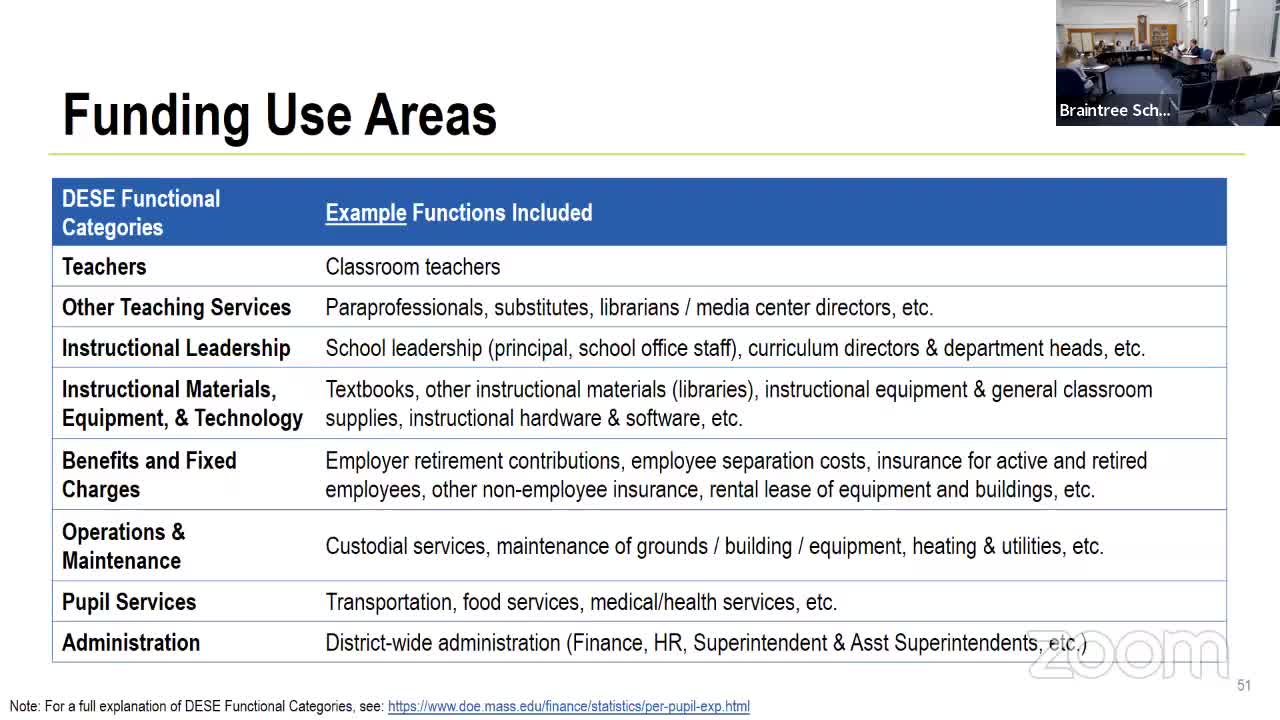Special education services face scrutiny amid rising referrals
August 26, 2024 | Braintree Public Schools, School Boards, Massachusetts
This article was created by AI summarizing key points discussed. AI makes mistakes, so for full details and context, please refer to the video of the full meeting. Please report any errors so we can fix them. Report an error »

In a recent government meeting, discussions centered on the complexities and challenges of providing special education services within the school district. Key points included the rising costs associated with neurological special services, which encompass a range of therapies such as occupational therapy (OT), physical therapy (PT), and speech therapy. These services are often required for students who exhibit significant delays in their development.
The meeting highlighted the ongoing review of referral processes for special education, with the last comprehensive review conducted the previous year. The introduction of a new Individualized Education Program (IEP) presents an opportunity to standardize and improve these processes across the district. Administrators emphasized the importance of exploring all possible interventions before referring students to special education, as referrals can originate from both staff and families.
A notable trend discussed was the increase in referrals and diagnoses since the pandemic, particularly among elementary students. This has resulted in a higher percentage of students on IEPs, with 22% of the district's student population currently receiving special education services. The administration is actively working on implementing multiple tier systems of support to assist struggling students without immediately resorting to special education services.
The meeting also addressed disparities in per-pupil spending between schools, specifically between South and East Middle Schools. Despite East Middle School having a higher proportion of special education students, it was noted that the differences in spending were largely due to population sizes and class structures. Smaller class sizes at South Middle School contribute to a higher per-pupil expenditure.
Finally, the discussion touched on the overall costs of running elementary schools, revealing that expenditures remain relatively consistent regardless of student population, with total spending typically ranging between $2.7 million and $3 million per school. However, the per-pupil cost decreases as student numbers increase, highlighting the financial implications of class sizes and school capacity.
The meeting underscored the district's commitment to refining its special education processes and addressing funding disparities, while also navigating the challenges posed by increased demand for services in the wake of the pandemic.
The meeting highlighted the ongoing review of referral processes for special education, with the last comprehensive review conducted the previous year. The introduction of a new Individualized Education Program (IEP) presents an opportunity to standardize and improve these processes across the district. Administrators emphasized the importance of exploring all possible interventions before referring students to special education, as referrals can originate from both staff and families.
A notable trend discussed was the increase in referrals and diagnoses since the pandemic, particularly among elementary students. This has resulted in a higher percentage of students on IEPs, with 22% of the district's student population currently receiving special education services. The administration is actively working on implementing multiple tier systems of support to assist struggling students without immediately resorting to special education services.
The meeting also addressed disparities in per-pupil spending between schools, specifically between South and East Middle Schools. Despite East Middle School having a higher proportion of special education students, it was noted that the differences in spending were largely due to population sizes and class structures. Smaller class sizes at South Middle School contribute to a higher per-pupil expenditure.
Finally, the discussion touched on the overall costs of running elementary schools, revealing that expenditures remain relatively consistent regardless of student population, with total spending typically ranging between $2.7 million and $3 million per school. However, the per-pupil cost decreases as student numbers increase, highlighting the financial implications of class sizes and school capacity.
The meeting underscored the district's commitment to refining its special education processes and addressing funding disparities, while also navigating the challenges posed by increased demand for services in the wake of the pandemic.
View full meeting
This article is based on a recent meeting—watch the full video and explore the complete transcript for deeper insights into the discussion.
View full meeting
